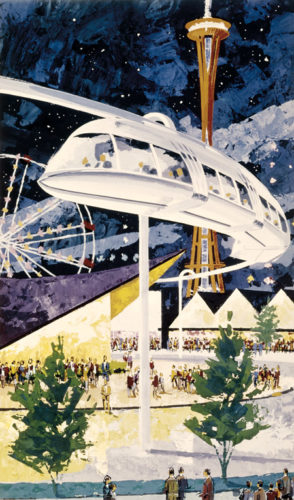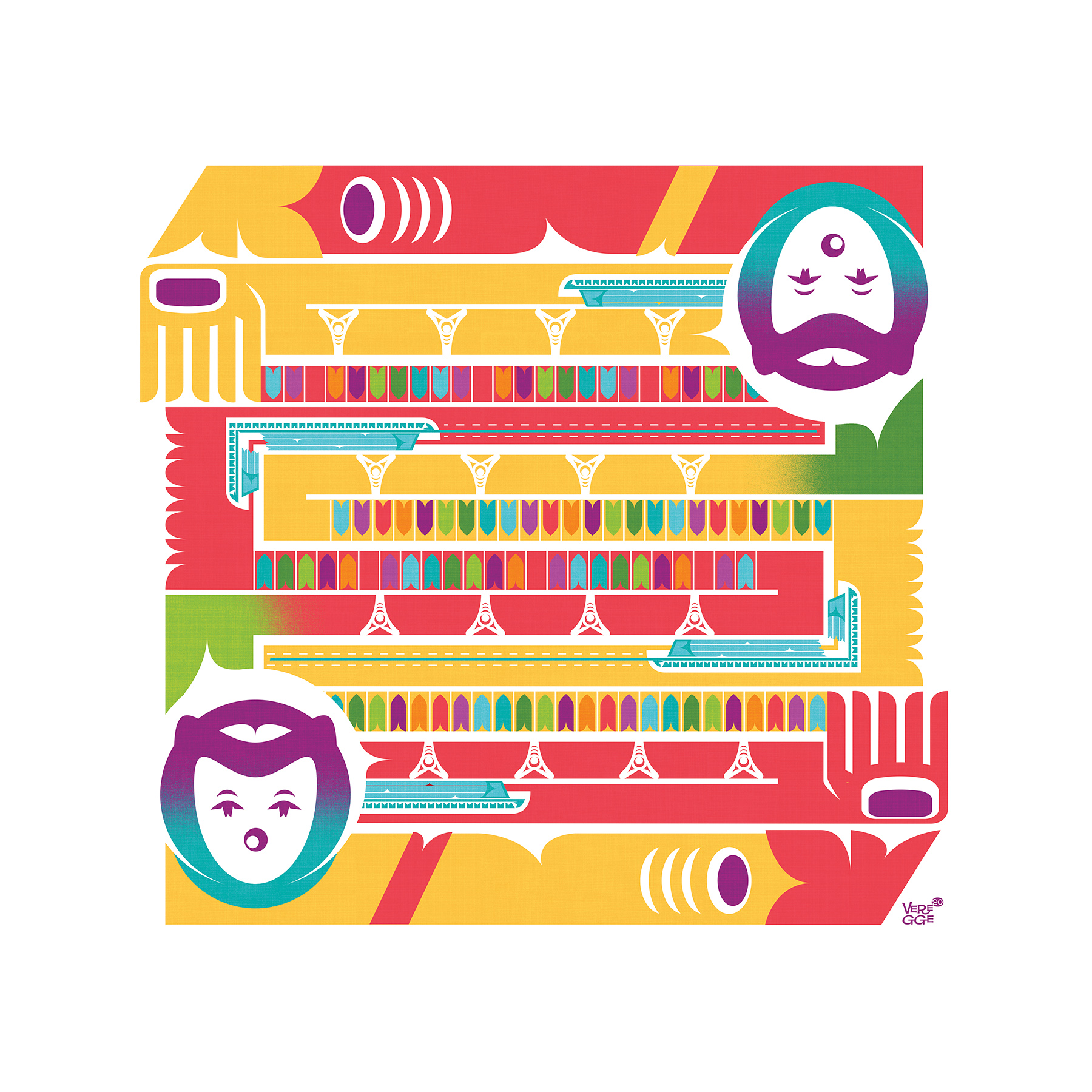Road to the Future (Seattle Monorail)
EXHIBITION:
Jeffrey Veregge: A Better Tomorrow “Being that the fairgrounds were more than a mile from downtown Seattle, promoters realized that transportation was needed to shuttle visitors back and forth to their hotels. Buses and taxis would be inadequate, and Seattle’s trolley system was long since gone. The thought of a modern streamlined “train” wrapped around a single elevated rail seemed futuristic and fun, and it perfectly fit the motif of the fair.
“Being that the fairgrounds were more than a mile from downtown Seattle, promoters realized that transportation was needed to shuttle visitors back and forth to their hotels. Buses and taxis would be inadequate, and Seattle’s trolley system was long since gone. The thought of a modern streamlined “train” wrapped around a single elevated rail seemed futuristic and fun, and it perfectly fit the motif of the fair.
Less than a year before the fair opened, a contract was signed with Alweg Rapid Transit Systems in Sweden to construct the Monorail. Support columns were built along 5th Avenue, between the fairgrounds and the downtown terminal. The rail was only 1.3 miles long, and some visionaries predicted that after the fair, the Monorail could be extended and integrated throughout the region’s transportation grid. This never occurred, although monorail discussions remained part of Seattle culture for decades to come.”
-Excerpt from “Century 21 — The 1962 Seattle World’s Fair” by Alan J. Stein, HistoryLink.org
Johann Enderlein, a structural engineer with Alweg Rapid Transit Systems of Washington State, offered this prediction in 1962:
“When Seattle opened the gates to America’s Space Age World’s Fair in April 1962, it did not limit its futuristic theme to the exposition grounds only. For the visitor may reach the Fair from the downtown center by taking one of the two fast and quiet trains of the Alweg Monorail. Operating high above the street level without regard to traffic lights on the road below, this monorail installation represents the first rapid transit facility of this kind on the American continent and may well become the mass transportation system of the future — a highly feasible solution to the ever increasing problem of disorganized commuter travel” (“Concrete Construction for the Century 21 Exposition“).
-Excerpt from “Century 21 World’s Fair — Structural Engineering” By Marga Rose Hancock, HistoryLink.org

